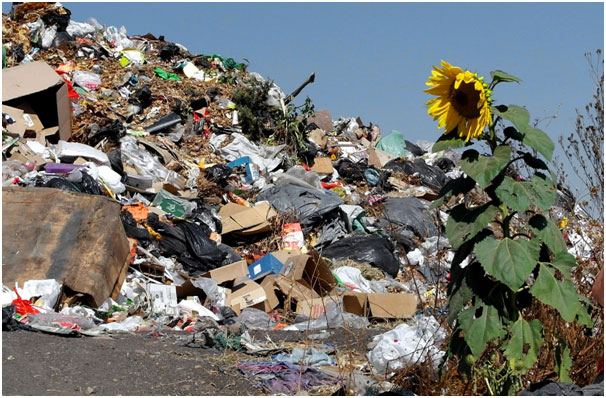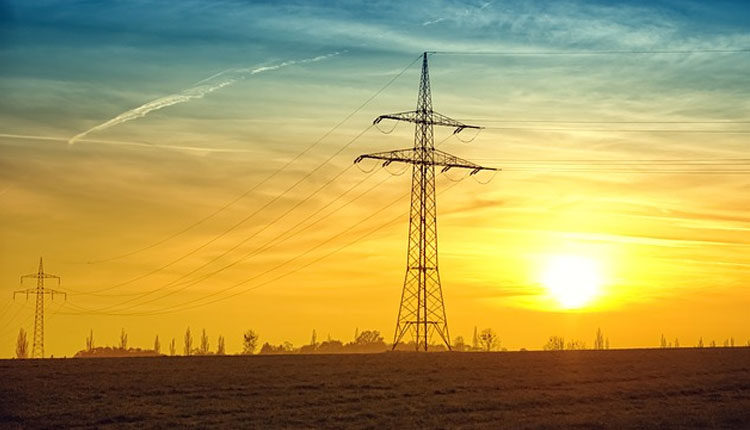Synopsis: During the last few years, environment has become an issue of paramount importance. Almost all world powers, including India, have realised that to sustain this planet we need to focus on the environmental wellbeing. Keeping this urgency in mind there have been several national and international seminars and conferences. Several treaties and agreements as well as regulations have been signed and formulated. Among various threats to the ecological balance the humongous amount of waste generated by human civilisation is of a tremendous concern. And a significant contributor to the accumulating waste is the power sector. Every day the power sector generates an alarming amount of waste but it also consumes a significant volume of the waste products for the waste-to-energy process.
At the beginning of 2020, the Government of India made an important series of changes to the nation’s coal sector through an ordinance and then amendments to the Coal Mines (Special Provisions) Act, 2015. Through these, the government has expanded opportunities for privatised, commercial mining. Coal blocks can now be owned by private entities without any prior coal mining experience and any “specified end-use.”
These big shifts have raised many questions about what the government intends to achieve by commercialising coal in this era of intense competition from renewables in the electricity sector, the rising NPAs of thermal power plants (TPPs) and a massive global withdrawal from fossil fuel for climate and environmental reasons.
What could be the potential for energy generation from waste in India? It is a whopping 5,600 Mw – almost enough to meet the entire power demand of Delhi — if the country could put all of its industrial and urban organic waste to use. And yet, the renewable energy technology is facing speed bumps.
There has been widespread criticism of the WTE plants, which convert non-biodegradable waste. The Okhla WTE plant in Delhi has faced continuous protest for polluting the environment. In 2016, the National Green Tribunal had slapped an environmental compensation fine of Rs 25 lakh on the plant.
The most recent case is of a five-megawatt (MW) plant in Bengaluru being opposed by activists on grounds of health and sustainability risks.

Is all well with WtE?
Around 92 plants with an aggregate capacity of around 250 MW have been set up in the country for electricity generation from urban, agricultural and industrial waste. On an average, 100 tonnes per day of municipal solid waste (MSW) is required to generate one MW of power.
According to the Associated Chambers of Commerce and Industry’s report “Value of Waste 2015”, investors valued WTE in India at almost $1.5 billion, around Rs 11,0000 crore, in 2017 and expected it to grow to about $11.7 billion by 2052.
Way back in 1874 the first incinerator or “Destructor” was built in Nottingham UK by Manlove, Alliott and Co. Ltd. According to the design of Alfred Fryer.
Then in1885, the first US incinerator was built on Governors Island in New York. Denmark built the first waste incinerator in 1903 in Frederiksberg. The Czech Republic built its first facility in Brno in the year 1905.
Two processes, namely, gasification and pyrolysis, have been known and used for centuries and especially for coal since the early 18th century. The need for developing technologies for processing residual solid mixed waste has only come under the focus only in recent years stimulated by the search for more efficient energy recovery.
Incineration, the process through which combustion of organic material such as waste with energy recovery, is the most common waste-to-energy implementation. All new WtE plants in the OECD nations incinerating waste (residual MSW, commercial, industrial or RDF) have to meet strict emission standards, including those on nitrogen oxides (NOx), sulphur dioxide (SO2), heavy metals and dioxins. Hence, technologically advanced incineration plants are vastly different from the old types, some of which neither recovered energy nor materials. Modern incinerators reduce the volume of the original waste by 95 to 96 per cent, depending upon composition and degree of recovery of materials such as metals from the ash for recycling.
Incinerators may also emit fine particulate, heavy metals, trace dioxin and acid gas, even though these emissions are relatively low from modern incinerators. Apart from that other concerns include proper management of residual waste: toxic fly ash, which must be handled in hazardous waste disposal installation as well as incinerator bottom ash (IBA), which must be reused properly.
Critics point out that incinerators destroy valuable resources and that may reduce incentives for recycling. The question is, however, an open one, as European countries which recycle the most (up to 70 per cent) also incinerate to avoid landfilling.
Incinerators have electric efficiencies of up to 14 to 28 per cent. For example, in order to avoid losing the rest of the energy, it can be used for district heating (cogeneration). The total efficiencies of cogeneration incinerators are typically higher than 80 per cent (based on the lower heating value of the waste).

Incineration, as the name suggest, usually entails burning waste (residual MSW, commercial, industrial and RDF) to boil water which powers steam generators that generate electricity and heat to be used in residences, businesses, institutions and industries. One problem associated is the potential for pollutants to enter the atmosphere with the flue gases from the boiler. These pollutants can be highly acidic and in the 1980s were reported to cause environmental degradation by turning rain into acid rain. State-of-the-art incinerators incorporate carefully engineered primary and secondary burn chambers, and controlled burners designed to burn completely with the lowest possible emissions, eliminating, in some cases, the need for lime scrubbers and electro-static precipitators on smokestacks.
By passing the smoke through the basic lime scrubbers, any acids that might be in the smoke is neutralised which helps prevent the acid from being released in the atmosphere and damaging the environment. Several other devices, such as fabric filters, reactors, and catalysts destroy or arrest other regulated pollutants. According to the New York Times, modern incineration plants are so clean that “many times more dioxin is now released from home fireplaces and backyard barbecues than from incineration”. The German Environmental Ministry said recently, “because of stringent regulations, waste incineration plants are no longer significant in terms of emissions of dioxins, dust, and heavy metals”.
There are several other new and emerging technologies that are capable of producing energy from waste and other fuels without direct combustion. Some of these technologies have the potential to produce more electric power from the same amount of fuel than would be possible by direct combustion. This is primarily due to the separation of corrosive components (ash) from the converted fuel, thereby allowing higher combustion temperatures in e.g. boilers, gas turbines, internal combustion engines, fuel cells. Some are able to efficiently convert the energy into liquid or gaseous fuels:
During the period of 2001–2007, globally, the waste-to-energy generating capacity increased by about four million metric tons annually. Japan and China have each built several plants based on direct smelting or on fluidised bed combustion of solid waste. China alone has built about 434 waste-to-energy plants in early 2016.However, Japan is the largest user in thermal treatment of municipal solid waste in the world, with 40 million tons. Some of the latest plants use stoker technology and others use the advanced oxygen enrichment technology. There are several treatment plants worldwide using relatively novel processes such as direct smelting, the Ebara fluidisation process and the Thermoselect JFE gasification and melting technology processes. As of June 2014, Indonesia had a total of 93.5 MW installed capacity of waste-to-energy, with a slew of projects in different stages of completion together amounting to another 373MW of capacity.
As we can see that waste management in the power sector has evolved remarkably. The threat of environmental damage has also been brought under control significantly. With the rapid depletion of natural resources and fossil fuels waste-to-energy is the future of the power sector along with solar energy. In another three or four decades the contribution of alternative energy source will be around 90 per cent. Along with the effort to generate more and more clean energy it is imperative that we don’t forget that there is a humongous amount of waste to manage.
Artice by —
Arijit Nag is a freelance journalist who writes on various aspects of the economy and current affairs.
Articles of Arijit Nag

